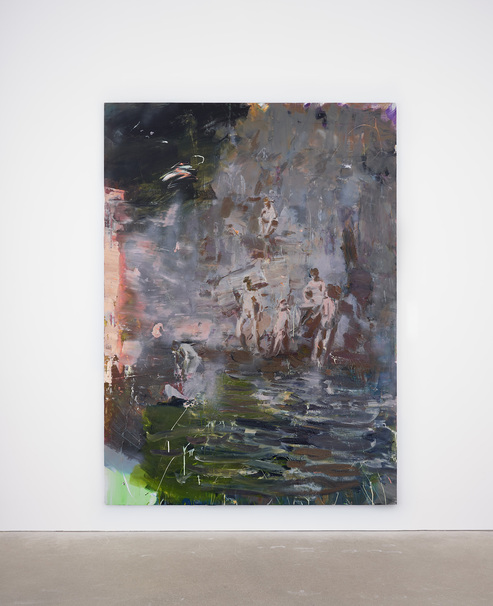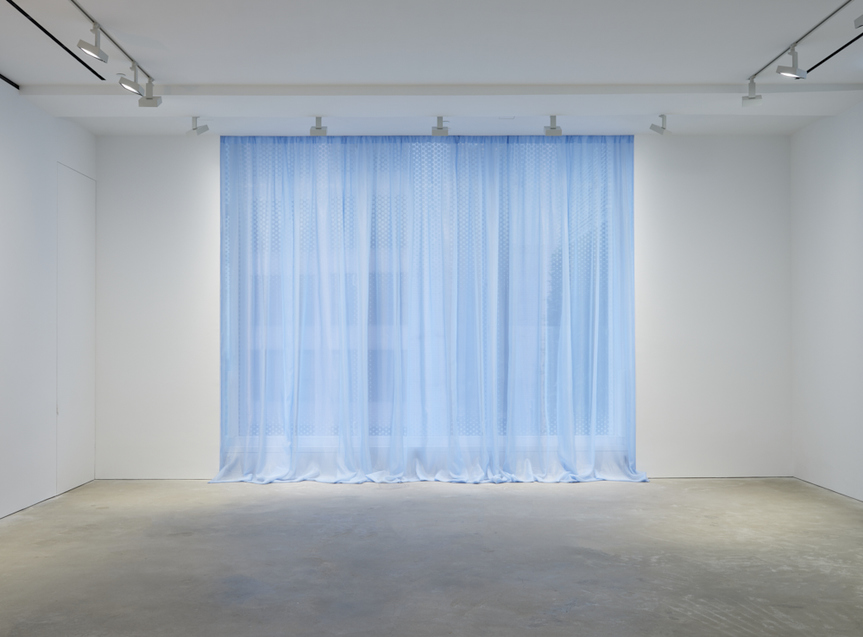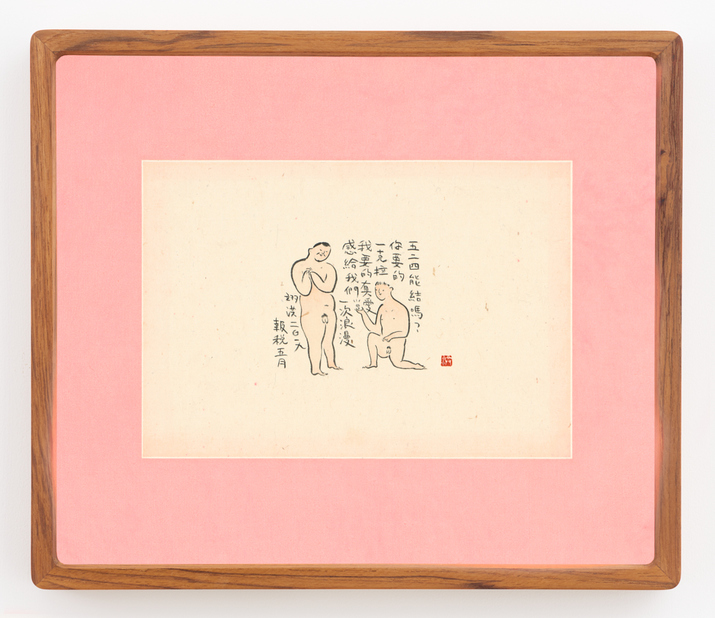-
From Current Issue
-
- Editor’s Letter Fire in the Heart
- Reviews I Gusti Ayu Kadek Murniasih
- Reviews 11th Seoul Mediacity Biennale: “One Escape at a Time”
- Dispatch Networked China
- One on One Monira Al Qadiri on Yukio Mishima
- Essays The rise of independent art spaces in pandemic-era Shanghai
- Features Tuan Andrew Nguyen
- Table of Contents
- Web Exclusives
- Archive
- Subscribe

R
E
V N
E
X
T
Installation view of “Singing the Body Electric,” at David Zwirner, Hong Kong, 2019. Courtesy David Zwirner, New York / London / Hong Kong.
David Zwirner’s latest exhibition, “Singing the Body Electric,” takes its title from an 1855 poem by Walt Whitman, in which he unabashedly expresses admiration for the human form. Curated by the gallery director Leo Xu, the show featured seven artists—most drawn from the David Zwirner’s celebrated roster, others from Xu’s now-defunct Shanghai gallery, Leo Xu Projects, and Taipei-based Michael Ku Gallery—who explored diverse contemporary issues around the body, desire, identity, and presence, at times unsettling, as opposed to arousing, viewers.
Visitors to the upper level galleries were met with an array of bodies that implicated viewers as voyeurs. At the entrance were three paintings by Wei Jia, whose most recent series references photographs of nude male swimmers from the 1880s. In River Bay (2019), bathing figures are set in the distance while sweeping brush strokes in glaucous greens and murky indigo stretch out to the viewer, situating them in the scene. Housed in the adjacent gallery was a selection of close-up photographs by Philip-Lorca diCorcia, of young, male prostitutes and pole dancers at work. Titled after the subject’s stage name, Harvest Moon (2003–04) frames a woman hanging upside-down from a pole, her face reflected in the polished wood below. Ankles crossed, she resembles an inverted Vitruvian Man, defiantly examining the viewer as much as she is being examined. Even more exposed are the two women embracing in Pond (2007) by painter Lisa Yuskavage—the only female artist included in this show. Their posturing references mainstream pornography in lieu of true intimacy, their youthful bodies belied by matured faces. One’s finger reaches towards the other’s pubis, while the broken necklace with dripping pearls suggests not their passion, but rather the violence of the viewer’s appetite.
In direct contrast with these provocative images were large photographic prints by Wolfgang Tillmans, part of an ongoing series began in 1989 titled Faltenwurf—a German term describing drapery. Alluding to hard labor and crude pleasures, the featured discarded cargo pants in faded black and khaki are imbued with movement, the tough materials echoing the curves of the previous wearer and transforming them into “sculptural objects” that accentuate the absent body. These stiff folds both contrasted and referenced the gauzy curtains of “Untitled” (Loverboy) by Felix Gonzalez-Torres. Placed in the last gallery on the lower floor, this 1989 installation was the highlight of the show. Composed of meters of sheer blue curtaining that cover a gallery window, it suffused the whole room with a soft glow, similar to that of light radiating from a computer monitor.
The gentle interplay between private and public, teased out in Gonzalez-Torres’ work, was also evident in the works of Jian Yi-Hong and aaajiao. Framed much like autobiographical Instagram stories in rice paper and ink, Jian’s ten mixed-media paintings (all 2019) illustrate the intimate shared lives of millennials—for example, we see a man proposing to his partner nearby the printed characters bao shui (“tax declaration”). These characters are phonetically similar to “hugging” and “sleeping”—commonly used terms Taiwanese people use in dating apps. Here, the artist references the historical significance of the month of May—a period previously earmarked for the practical task of filing taxes, but that is now celebrated for the historic date of May 24, 2019, when Taiwan legalized same-sex unions. In contrast is a single-channel video by aaajiao that projects viewers into an imagined and disembodied future. Exploring the amorous yet distanced relationship between an animated female cyborg and a writhing “Mӧbius strip” of windows, I hate people but I love you (2017) reminds us that the incorporeal experience can be lonelier than expected. “Will you be my friend?” the cyborg asks plaintively before answering her own question: “I suppose you’re there.”
Brought together for this group show, the artists praised and perplexed issues around the body, reverberating and distorting Whitman’s proclamations that “if any thing is sacred the human body is sacred.” Just as Whitman drew attention to the body, so too do these artists celebrate the human form, reveling in its inherently varied desires.
Leora Joy Jones is an editorial intern of ArtAsiaPacific.
“Singing the Body Electric” is on view at David Zwirner, Hong Kong, until August 10, 2019.
To read more of ArtAsiaPacific’s articles, visit our Digital Library.


















